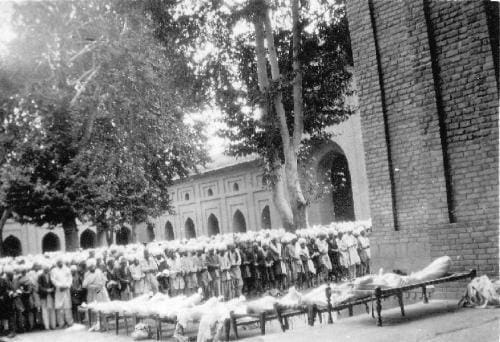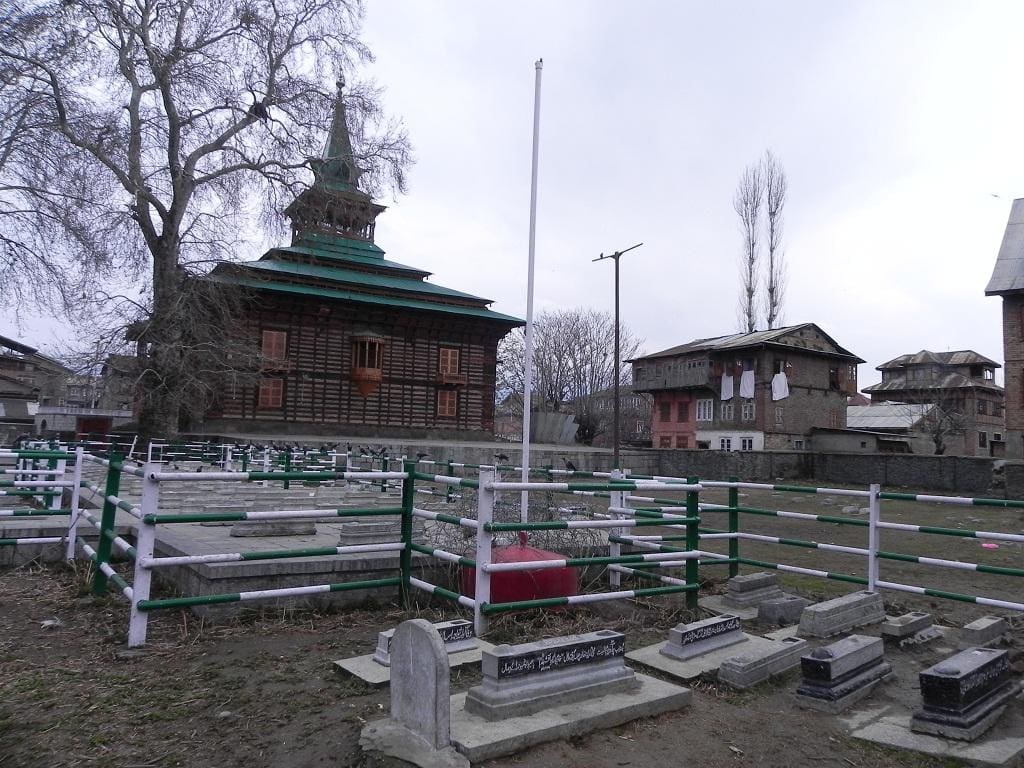
13 July was officially commemorated as Martyr’s Day in the erstwhile state of Jammu & Kashmir from 1949. This was until 2019 when New Delhi, post-Article 370 abrogation, scrapped it from the list of official holidays. This was one of the many decisions the government took after the abrogation of special status.
The day is remembered as the beginning of political awakening among the Kashmiri people. The day when 22 people were killed by the Autocratic monarch’s forces in 1931.
On 13 July 1931, Dogra forces opened fire on people gathered outside the court in Srinagar which was hearing Abdul Qadeer’s case.
Abdul Qadeer was accused of delivering an inflammatory speech. Qadeer’s speech came from the backdrop of few anti-Muslim incidents in the princely state. Kashmir had been under foreign rule for more than four centuries. Beginning with the Mughals then the Afghans followed by Sikhs and then Dogras who got control after they purchased the region from the British.
13 July proved to be the first evident incident where people showed some resistance. According to Kashmiri politician and scholar Prem Nath Bazaz, the reason behind this agitation was discontent among Muslims, while terming 13 July as the day when the struggle for freedom and independence in the most modern sense started openly.
Ever since this day has been marked as an important one especially among Muslims in J&K. In 1948 this day was officially declared as martyrs day. The day evolved to be important not just in the political sphere of Kashmir but also in its social and cultural spheres.


The day is equally important in separatists and mainstream political circles. Mainstream politicians saw accession to India as the climax of the struggle that started on 13 July 1931. The separatists believe that their independence struggle started on July 13, 1931, yet to reach its climax.
Historically how 13 July was observed had changed significantly over time. The old generation remembers the day in a more festive way. The day was marked by a large procession in the downtown area of Srinagar taken by the National Conference and a relatively smaller one by the Mirwaiz(head preacher) of Jamia Masjid. The NC then was almost the undisputed political force in the Valley, with Mirwaiz having some political strength in some pockets of the old city. These processions started from different points and ended at the Martyrs Graveyard in Naqshbandsahab’s Shrine in the Nowhata area, where the martyrs of 1931 are buried.
People all around the valley would join one of these processions depending on their political leaning. People would also visit their relatives living in downtown to witness these processions. In the morning, the procession led by Mirwaiz would start from Jamia Masjid and end at the martyrs Grave. This was followed by the larger National Conference procession in the afternoon and it would start from then NC headquarters in Zaina Kadal all the way to Martyr’s grave. The procession was usually led by Sheikh Abdullah and in later years by his son.
The processions were accompanied by bands singing, raising party slogans, strength showing and would occasionally end up as the battle scenes between these two groups.
Such displays ended with the rise of the separatist movement in the valley. But the day never lost its relevance, just the optics of it changed.
Post separatist movement, the day got more attached to the separatist narrative and was being portrayed as the beginning of the movement the valley was and is going through. As for the mainstream, the day was now limited to official statements and a visit to the grave. The CM, ministers, mainstream leaders would visit the grave, while the separatists would usually find themselves under restrictions and would have to suffice with the tributes and call for shutdown. And on many occasions old city if not valley would be under restrictions.
Mehbooba Mufti happened to be the last CM to officially visit Martyrs Grave on Martyr’s day. The official proceedings were skipped by the governors in 2018 and 2019. The day was however no longer kept official post-Abrogation of special status in 2020. Since the central government was at the helm of affairs of the region, they took and keep taking the important and drastic decisions for the region and its people, with people or their representatives having no say in any way.
Starting from the abrogation itself to the domicile laws, to the landowning laws, to the contracts, to almost everything they want. The change in the holiday list wouldn’t have been tough, without bothering about the sentiments of people being governed. And the date that was added to the list of holidays was the accession day.
Nevertheless, the day is no longer official but the day would continue to be commemorated by separatists and mainstreams in their own way. The mainstream might have to adjust little on the day. Like last year mainstream politicians weren’t given permission to visit the martyrs’ graves today. But for the separatists, the trend shall remain the same.
The day for them is a souvenir of their struggle and just as before they will deal in the same way, protest and shut down, if they can.
The day for all its significance and history has a place among Kashmiris. While they might not be allowed to commemorate it by New Delhi, they will remember the day and what it signifies. Its treatment only explains New Delhi’s approach towards Kashmir and Kashmiris. Under the new order, Kashmiris are not even allowed to preserve their history and culture, rather New Delhi will dictate one.
Hamaad Habibullah is a freelance journalist based in New Delhi.



